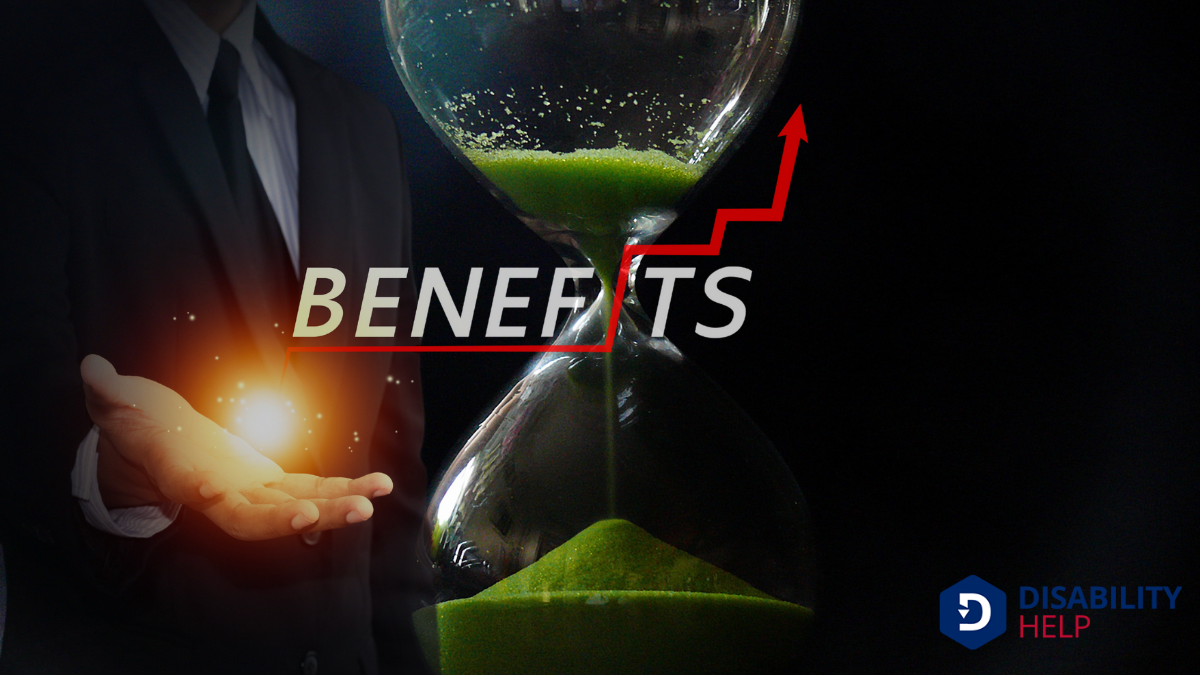Typically, short-term disability benefitsFinancial assistance provided to individuals who are unable to work due to a disability, such as Soc... last between three to six months, depending on your policy, employer plans, and state regulations. Some plans might extend up to a year, but it's less common. Factors like the severity of the condition and medical assessments can also influence the duration. Reviewing your employer's policy and state rules gives clarity on your benefit period. By unraveling the specifics, we can better understand how to leverage these benefits effectively.
Key Takeaways
- Short-term disability benefits typically last from three to six months, depending on the policy.
- Some plans may extend benefits up to one year, though this is less common.
- Employer policies and state laws significantly affect the maximum duration of benefits.
- States like California, New York, and New Jersey have specific short-term disability programs.
- Reviewing specific plan details is crucial for understanding the exact benefit duration.
Understanding Short-Term Disability Benefits
Short-term disability benefits are a critical safety net for many of us when illness or injury temporarily prevents us from working.
These benefits provide financial support, helping us cover essential expenses while we focus on recovery.
Typically, short-term disability insuranceInsurance that provides income replacement for a limited time when an employee is unable to work due... kicks in after a brief waiting period, ensuring we're not left without income during challenging times.
It’s important to understand that these benefits are designed to replace a portion of our usual earnings, not the full amount.
This partial compensation eases the burden of lost wages, allowing us to manage our financial obligations.
Recognizing how these benefits function helps us appreciate their role in maintaining stability during periods of unexpected health setbacks, ensuring we can prioritize our well-being without undue stress.
Factors Affecting Benefit Duration

While maneuvering through the complexities of short-term disability benefits, understanding the factors affecting benefit duration is essential.
First, the specific terms of our policy play a significant role. Each policy has its own set of rules governing how long benefits will last.
In addition, the nature and severity of the disability can influence the duration. More severe or long-lasting conditions might require extended support.
Additionally, our employer’s policies might offer variations in coverage length.
It’s important to note that state laws can also dictate the duration, as they sometimes set minimum standards or limits.
Finally, our medical provider’s assessment and recommendations can impact the approval and continuation of benefits.
Common Timeframes for Benefit Coverage
When we look at the common timeframes for benefit coverage, it's clear that short-term disability plans typically offer benefits for a period ranging from a few weeks to several months. Most plans provide coverage for about three to six months, but this can vary based on the specific policy.
Understanding these timeframes helps us plan for potential financial gaps during recovery.
We should note that some policies might extend benefits up to a year, though these are less common. It's important to check the details of our specific plan to know exactly what to expect.
Employer Policies and Their Impact
Employer policies greatly influence the duration and conditions of short-term disability benefits. As we navigate these policies, it's vital to recognize that they can vary widely between companies.
Our employers may set specific time limits on benefits, often ranging from a few weeks to several months. They also determine eligibility criteria, waiting periods, and the percentage of income we receive during our leave.
Understanding these policies helps us prepare for potential financial impacts. It's important to review our company's short-term disability plan details, perhaps outlined in the employee handbook or benefits portal.
State Regulations You Need to Know

Steering through the landscape of short-term disability benefits, we must consider how state regulations play an essential role. Each state sets its own guidelines, impacting the duration and conditions under which benefits are available. While some states mandate short-term disability insuranceA form of insurance that provides income to individuals who are unable to work due to a disability., others leave it to employers to decide.
We need to closely examine our state’s specific requirements because they can greatly influence the benefits we receive.
For instance, states like California, New York, and New Jersey have their own disability programs, each with unique rules on coverage length and eligibility criteria. Understanding these variations helps us navigate our benefits more effectively.
Influence of Disability Nature and Severity
Let's explore how the type and severity of a disability greatly influence the duration of short-term benefits.
We must consider that a thorough medical assessment is essential in determining the rightful benefit period, ensuring each case is handled fairly.
Impact of Disability Type
While the duration of short-term disability benefits often depends on policy specifics, the nature and severity of a disability greatly influence how long these benefits last. We should consider the type of disability we’re dealing with.
Physical disabilities, like a broken bone, might require a different recovery timeline than mental health challenges. Each type presents unique demands on our bodies and minds, affecting how swiftly we can return to work.
For instance, recovering from surgery might mean a predictable healing path, whereas mental health conditions can vary considerably. By understanding these nuances, we can better navigate our benefit options.
It’s essential for us to recognize that the disability type not only impacts our recovery but also the duration we may need support.
Severity Determines Duration
Understanding the type of disability is just the beginning; we must also consider how severe the condition is. The severity of a disability plays a vital role in determining the duration of short-term disability benefits.
Let’s break it down:
- Extent of ImpairmentA loss or abnormality of a body structure or function, whether physical, mental, or sensory, often a...: A more severe impairment often means a longer recovery period, leading to extended benefits.
- Functional Limitations: If the disability considerably affects daily activities, the benefit duration might increase.
- Complexity of Treatment: More complex treatments typically require additional time, influencing the benefits' length.
- Prognosis: A poor prognosis could mean a longer duration to guarantee complete recovery.
Medical Assessment Importance
When evaluating the importance of medical evaluations, we recognize that they’re essential in determining the duration of short-term disability benefits.
A thorough medical assessment helps us understand the nature and severity of a disability, which directly influences how long benefits might be needed.
It’s vital for both healthcare providers and insurance companies to have accurate information to make informed decisions.
Preparing for the End of Benefits
As the end of your short-term disability benefits approaches, it’s essential to have a plan in place for the change.
Let’s make certain we’re ready for this shift by considering the following steps:
1. Review Finances: Assess our budget to understand how the end of benefits will impact us financially.
Identify any adjustments needed to manage expenses.
2. Explore Resources: Research potential financial aid or community programs that might provide assistance during this time.
3. Seek Professional Guidance: Consult a financial advisor or counselor for personalized advice on managing this change smoothly.
4. Communicate with Family: Discuss our situation with loved ones to gain their support and insights, which can be invaluable.
Transitioning Back to Work

As we approach the end of our short-term disability benefits, it's essential to contemplate strategies for a gradual return to work.
We'll need to discuss any workplace accommodationsModifications or adjustments in healthcare settings to support patients with disabilities. that might help ease this shift and guarantee we're not overwhelmed by workload expectations.
Together, let's plan a path that supports a smooth and successful re-entry into the workplace.
Gradual Return Strategies
Successfully shifting back to work after a period of short-term disability involves careful planning and effective gradual return strategies.
It’s important that we consider our health needs and work responsibilities. Here’s a strategy to ease the changeover:
- Start with Reduced Hours: Begin with fewer hours than usual. This helps us adjust without overwhelming fatigue.
- Gradually Increase Workload: Slowly add tasks each week. This allows us to build stamina and confidence.
- Set Realistic Goals: Establish achievable goals for each day. It guarantees steady progress without undue stress.
- Regular Check-ins: Schedule regular meetings with our supervisor. This keeps communication open and adjustments can be made as needed.
Workplace Accommodations Needed
Returning to work requires more than just a well-planned schedule; we also need to contemplate potential workplace accommodations.
It's vital to communicate openly with our employers about any adjustments that could facilitate a smoother changeover. These might include flexible hours, modified duties, or ergonomic workstations tailored to our needs. By discussing these options, we can help guarantee our return is both productive and supportive.
We should also consider any additional resources we might need, such as assistive technology or temporary changes in responsibilities.
It's important to advocate for ourselves, making sure our work environment aligns with our recovery requirements.
Let's remember that transparency benefits both us and our employers, fostering a collaborative approach to our successful reintegration into the workplace.
Managing Workload Expectations
Shifting back to work after a period of disability can be challenging, but managing workload expectations is key to a smooth adjustment. We can make this change easier by following a few practical steps:
- Communicate Openly: Let’s discuss our capabilities and limitations with our employer. It’s vital they understand our current situation.
- Prioritize Tasks: Together, we can identify which tasks need immediate attention and which can wait. This helps in managing stress and productivity.
- Set Realistic Goals: We should set achievable goals that align with our current abilities, avoiding unnecessary pressure.
- Seek Support: We shouldn’t hesitate to ask for help from colleagues or supervisors. They can provide assistance and understanding during this period.
Exploring Long-Term Disability Options
When faced with the end of short-term disability benefits, where do we turn next? Exploring long-term disability options is vital. This change can seem intimidating, but understanding our choices helps ease the process.
Long-term disability insuranceInsurance that provides income replacement for individuals who are unable to work for an extended pe... offers financial support if we can't return to work due to a prolonged illness or injury. It’s important to review our current policy, if we've one, or consider purchasing coverage.
Employer-provided plans or private policies each have unique terms. We should examine coverage limits, waiting periods, and potential exclusions. Consulting with a benefits advisor or insurance agent can provide personalized guidance.
Steps to Maximize Your Benefit Period
Let's make the most of our short-term disability benefits by starting with a clear understanding of our policy's limitations.
By submitting accurate documentation and consulting with professionals, we can guarantee we’re not leaving any benefits on the table.
Together, these steps can help us maximize the duration of our coverage effectively.
Understand Policy Limitations
To fully leverage the benefits of your short-term disability policy, it’s vital to understand the specific limitations that apply. Knowing these details helps us make informed decisions and avoid surprises.
Here’s what we should look out for:
- Coverage Period: Let’s check how long the benefits last. Policies often have a maximum duration, which we mustn’t exceed.
- Exclusions: Some conditions mightn't be covered. We need to identify these to guarantee our situation qualifies.
- Waiting Period: Policies usually have a waiting period before benefits kick in. Knowing this helps us plan financially.
- Benefit Amount: It’s important to know how much we’ll receive. Policies typically pay a percentage of our salary.
Submit Accurate Documentation
Having a clear grasp of policy limitations lays the groundwork for successfully maneuvering the short-term disability claims process.
Now, let's make sure we submit accurate documentation to maximize our benefit period. We need to gather all necessary paperwork, such as medical reports and employer statements, guaranteeing every detail aligns with our insurer's requirements.
It's vital to review these documents thoroughly for accuracy and completeness before submission. Any errors or omissions could delay our claim or reduce benefits.
Let's double-check dates, signatures, and any supporting information that substantiates our disability. By keeping organized records and cross-referencing with the policy's guidelines, we can present a strong case.
Proper documentation is key to securing the full duration of benefits we're entitled to.
Consult With Professionals
While maneuvering through the complexities of short-term disability claims, consulting with experienced professionals can be invaluable in maximizing our benefit period.
Experts can provide guidance, ensuring we don’t miss essential steps or requirements. Here’s how we can make the most out of professional advice:
- Engage an Attorney: Legal experts can help us interpret policy terms, ensuring we comprehend our rights and responsibilities.
- Seek an Insurance Advisor: They can clarify confusing policy details and guide us through claim procedures.
- Consult a Medical Professional: Accurate medical documentation is key. Doctors can help substantiate our claim with detailed reports.
- Contact a Benefits Specialist: They can offer insights into the nuances of disability benefits, helping us to strategize effectively.
Conclusion
As we wrap up our discussion, let's remember that understanding the nuances of short-term disability benefits is vital for steering the journey. By being aware of the factors that influence duration and familiarizing ourselves with employer policies and state regulations, we can better prepare for the end of benefits. It’s essential to plan for a smooth change back to work or explore long-term options if needed. Let's stay proactive, informed, and ready to maximize our benefit period together.






